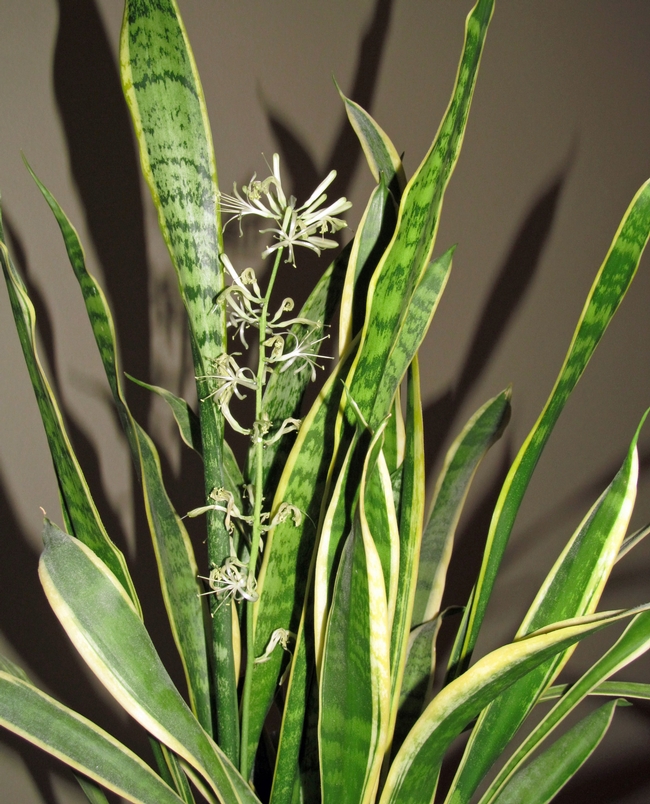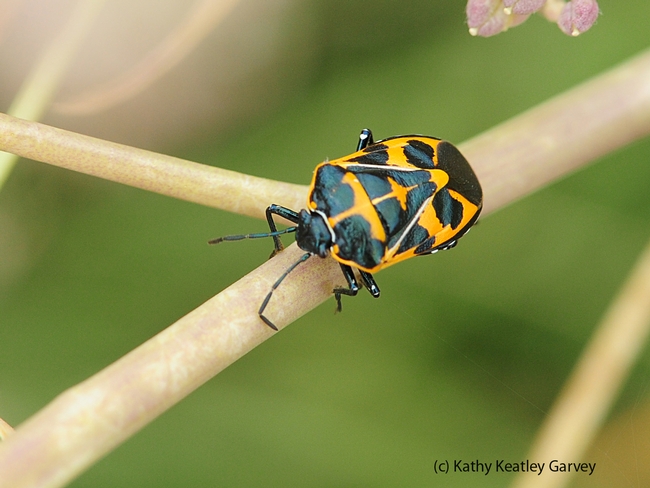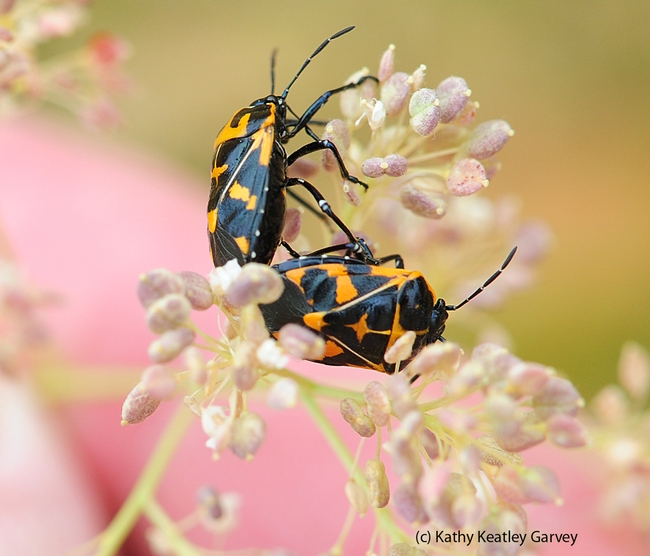UC Blogs
Patience Rewarded in Blooms
This spring I have been surprised by blooms from plants that I didn’t think bloomed and/or haven’t bloomed since owning them for the last several years. The first delightful bloom came in May. I have owned a night blooming cereus (Epiphyllum oxypetalum) for many years, reveling in its short lived, oh-so-fragrant, night-time blooms in late summer.
At a succulent show, I purchased several different epiphyllum hybrids (often called epis) after being told they have spectacular color and bloom during the day in spring. The flat, leaf-like stems are a medium green growing 18”-30” long with an average width of 2”-4”. While succulent like, epis like regular water and bright light or shade. They also need protection from frost. After 3 years in my greenhouse, one bloomed with flowers of two different colors on the same stem (the flowers bloomed one after the other). Each bloom was 8”-10” wide and lasted for 3 days. While not fragrant, it was still quite a sight!
Next, my Sansevieria trifasciata laurentii (commonly called Mother-in-law’s tongue, Snake plant) put up a 12” flower spike and bloomed! I’ve owned this plant for at least 10 years and really didn’t think it bloomed at all (if I’d done some research I would have learned differently). Since I haven’t repotted this plant in many years, its overcrowded roots certainly got my attention in a most beautiful way! This easy houseplant likes bright, indirect light, completely dry soil between watering (to almost no water in winter), and ¼ strength complete fertilizer application in summer. Watch for spider mites and mealy bugs. Maybe it will flower for you too.
Lastly, just this week I saw that my Cuban Oregano (Plectranthus amboinicus) has put out a bloom. This is the 3rd year this plant has been living with me. It has struggled as I gave it too much shade initially, then I failed to move it into a warmer location when winter came. It has been happily filling out the pot it’s in, so I’m happy to see it bloom. Hopefully I will have more than one spike as I saw a hummingbird circling the plant. This strongly pungent perennial is drought tolerant, but frost tender and reproduces easily by cuttings.
So my patience (or is that benign neglect) has been rewarded this spring.

Epiphyllum oxypetalum. (photos by Carolyn Allen)

Epiphyte flower pink-purple.

Blooming Sansevieria.

Blooming Cuban Oregano.
Fair exhibit a tribute to Marin's first advisor
UC Cooperative Extension's first farm advisor in Marin County was featured in a story written by Vicki Larson in the Marin Independent Journal.
M.B. Boissevain, who became a UCCE advisor in 1920, took approximately 500 photos of Marin agriculture and its people during his 30-year career. Ellie Rilla, UCCE advisor in Marin County, and David Lewis, UCCE director and advisor in Marin County, assembled an exhibit of 74 of his photos that was on display at the Marin County Fair June 30 – July 4.
Lewis and Rilla have also written a book, “Marin Agrarian Roots,” about the agricultural history of the county based on Boissevain’s photos and farm reports.
This Bug Is Not Welcome
It boasts striking colors, but you don't want this bug anywhere near your garden. It sucks. Literally. This is a harlequin bug, Murgantia...

Harlequin bug, Murgantia histronica, on weeds at the Benicia Marina. (Photo by Kathy Keatley Garvey)

Looking down on a harlequin bug. (Photo by Kathy Keatley Garvey)

Harlequin bugs suck juices out of plants. They prefer the cabbage family but also go for garden vegetables, weeds, field crops and fruit trees. (Photo by Kathy Keatley Garvey)
Summertime...and the Livin' Is Easy
Today's the Fourth of July and folks are splashing in their pools. So, what happens when a bee falls in? Sometimes they get lucky--if there's a...

Summertime...and the living is easy...A female sweat bee, genus Halictus, floats on a leaf in a swimming pool. (Photo by Kathy Keatley Garvey)
Independence Day Plant
Happy Independence Day to all, with a special thank you to all of those who made our Independence possible! It is a great day to celebrate our freedom, and one of my favorite ways to mark an occasion such as this is by planting something special in my garden. You’re in luck, as I know just the plant!
A few years ago, I found a beautiful plant at a nursery-a Shooting Star hydrangea, Hydrangea macrophylla ‘Hanabi’. This is a lace cap hydrangea of pure white, double, flattened flower heads shaped like a star. Very much like fireworks in your own garden! Like any hydrangea, you’ll need to plant it so that it is shaded from the hot sun and drying winds. They require frequent watering to keep it lush and beautiful, so you don’t want it to dry out. Plant in a slightly acidic soil that offers good drainage (if you have clay soil, you’ll want to keep it amended with compost). After 4 years, my plant is about 3’ tall and wide. However, they can grow to about 5’, so be sure to give it room to breathe and grow.
So go out and find a shooting star hydrangea and plant it to honor our forefathers!

Hydrangea macrophylla 'Hanabi' (photo from aquiya.skr.jp)


